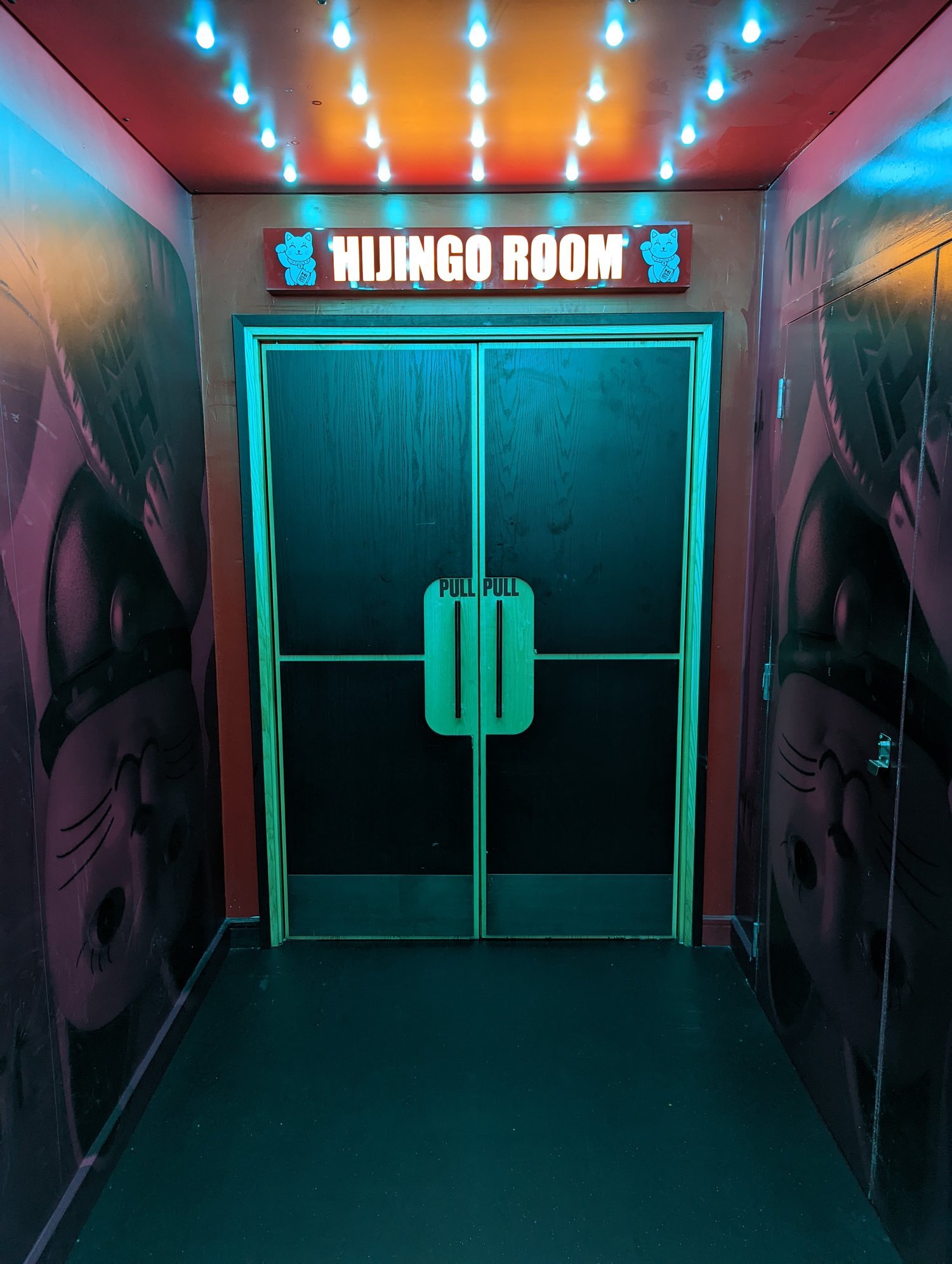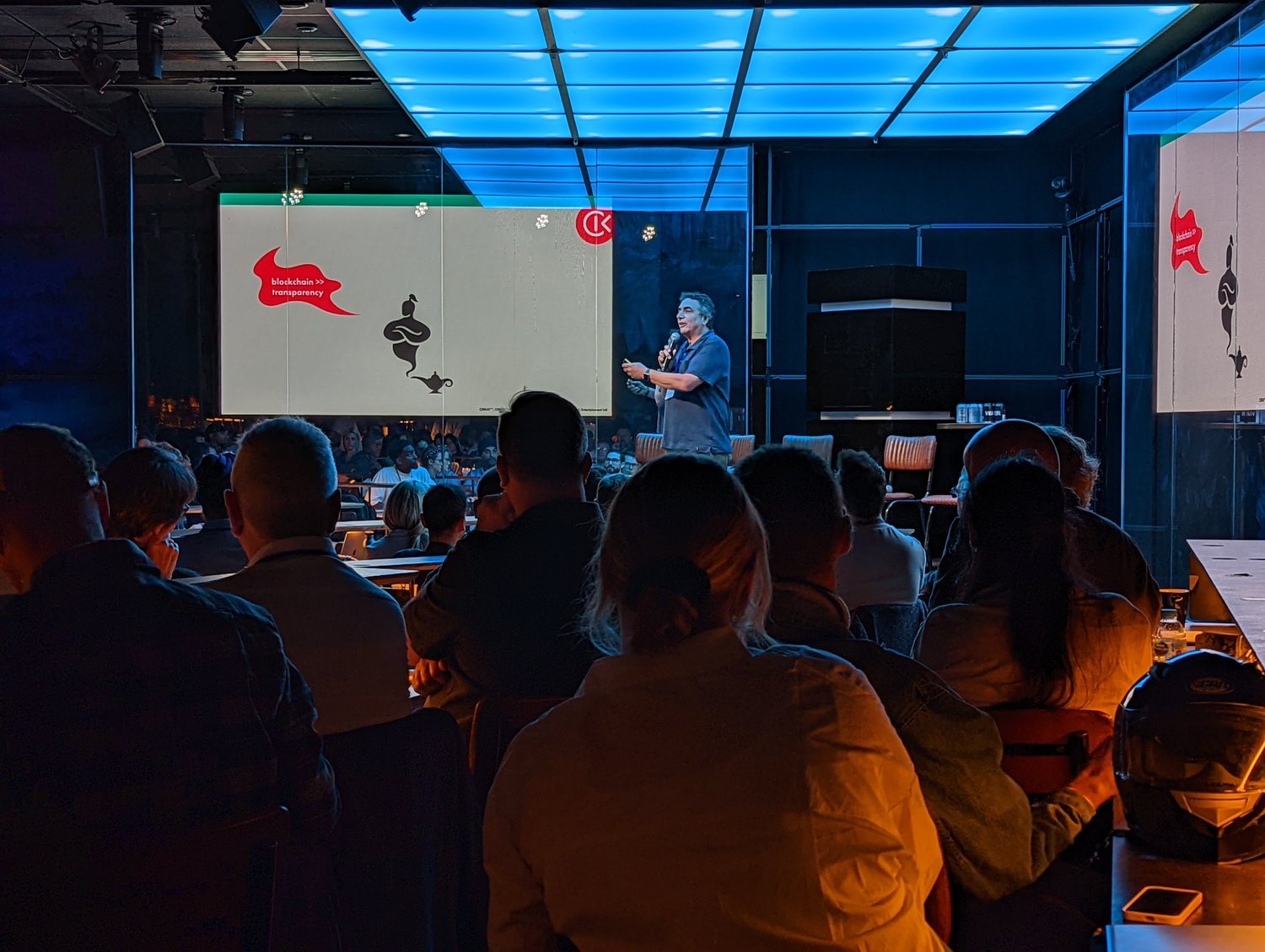Bear Market Building, the ‘Right Game’ and Avoiding NFT Stigma: Scenes from the Sandbox Summit in London
Despite the dramatic downturn in crypto prices of late hope was a theme at a recent music-based NFT conference in London

Hope was in the air in London last week at a web3-focused music conference. The day showcased startups and other web3 projects that are leveraging blockchain technology to ameliorate some of the music industry’s long standing woes – all amidst the worst crypto selloff in several years. In the face of a drowning market, the presenters stood defiant.
“Things that succeed are generally built in bear markets – because that’s when you’re playing the right game,” said Kieran George, Head of NFTs and Blockchain at Soundr, a metaverse music label for virtual artists.
George was among a couple hundred people that convened at Hijingo Bingo, a multi-sensory futuristic bingo parlor in between the Shoreditch and Finsbury neighborhoods. Music marketers, startup founders, artists, and media folks gathered for the Sandbox Summit, an annual conference hosted by Music Ally, the music business’s “global leading knowledge and skills company.”
Crypto has lost an astounding $700B since early May. Bitcoin recently fell below $20,000 for the first time since early 2020, and the price of Ether is hovering around $1,000 after peaking close to $5,000 less than a year ago. Multiple speakers at the event predicted that both currencies are far from their price floors.
But amidst admissions of those economic setbacks, the event’s tone and discussions were wholly optimistic: from community-driven DAOs that better empower artists to addressing outmoded music licensing structures to building more direct monetization routes from fan to artist. Certainly it’s in the best interest of the participating companies – web3 organizations reliant upon widespread adoption for sustained success – that we believe this crash to be fleeting. But there’s logic in the sentiment, too.
“Five years from now, we’ll look at this as a small necessary correction for speculators who really have no interest in this space,” said Goran Andersson, Head of International at Global Rockstar, a music platform formed in 2014 to support independent artists that has since incorporated NFTs as the core vehicle of their product offerings.
NFT presentation by Simon Scott, co-founder of CIRKAY
Bear markets are for builders because lower currency prices rid the space of fair-weather speculators, leaving web3 proponents to build the vision of a decentralized, community-driven web. That’s Kieran George’s “right game” – despite the market, the people that are here for the right reasons are going to stay, elevating the ecosystem with better products and stronger protocols.
“There’s a huge difference between currency prices and protocols,” said Grant Dexter, co-founder and CEO of Fanaply. Dexter should know, as he started building his digital collectibles platform in the fall of 2018 – near the nadir of crypto’s last bear market, when Bitcoin lost 87% of its value. Within a year, the coin’s price would increase by 20 times.
That “we’ve been there before, let’s get to work” mentality pervaded the day. Not only have the speakers endured bear markets, they’ve endured a relentlessly obdurate music industry, where affecting change – in the words of Ian Matthews, co-founder of Amplify and drummer for English rock band Kasabian – is “like trying to turn an oil tanker.”
“We need to remove the tech from this. Early adopters of tech are not the customers.”
— Goran Andersson
The experimentation happening at companies like Amplify – which is using blockchain technology to reconstruct the live music economy so artists can continue to earn “long after the gig has ended” – offers a glimpse into how web3 might change the industry’s infamous malaise.
The ultimate goal is a more inclusive ecosystem that addresses legacy licensing and monetization systems while expelling the crypto stigma that has siloed the web3 world from its web2 forebear. An important step toward accomplishing this will to meet people where they already are on terms they already understand.
One such tactic is moving away from the term “NFT,” which connotes fervor as a scammy, needlessly energy-intensive collectible for crypto bros.
“We need to remove the tech from this,” Andersson said. “Early adopters of tech are not the customers.”
Throughout the day, it became clear that the collective understanding of those customers is much more sophisticated than during the last “crypto winter.” Company leaders presented products and strategies that are more robust and customizable, with evidence of more adoption which means more room for testing and iteration. And customer sentiment – like the distaste for NFTs – is easier to track and evaluate.
NFT stigma
To confront such stigma, music NFT platform Royal is calling NFTs “limited digital assets.” Fanaply: “digital collectibles.” And Cirkay, a Sandbox Summit sponsor and marketplace built atop a content blockchain called Eluvio, calls them “fan passes.”
These terms effectively remove the tech and get closer to conveying the utility the tech provides. Just like we don’t need to know how Google’s programmatic auctions work to understand what “Google it” means, we don’t need to understand the tech behind how NFTs function to derive value from them.
Utility was a focal point of the summit, like NFTs that track royalties across secondary markets – why shouldn’t Picasso get paid every time someone sells his painting at a higher price point, for instance? Or replacing physical goods with a special type of NFT called a POAP (proof of attendance protocol) that acts as a unique, earned digital token for, say, a concert you attend. It’s a ticket stub that you can’t forget in the back seat of a cab, and it can serve as verifiable proof of fandom that gets you access to future events, music, merch, and other perks.
“We’re just waiting for the hook – for the hit song of NFTs to happen,” said Tersha Willis, CEO of Terrible*, a full-service merchandising company. “It exists with live [music]; I think it will be real proof of something. Showing that you were somewhere and you were in it – it’s the selfie of Instagram,” she said.
That critical hook that will drive hordes of people to web3 music has been a hot topic over the last year. But it’s a dangerous game when we act as though music isn’t enough utility in and of itself. It’s the same thinking that’s led to labels holding artists hostage until they go viral on platforms like TikTok. Do we need another selfie? Can’t music be the hook?
Onboarding more people to the web3 vision is a win, but part of web3’s allure is that it doesn’t need to cater to the crowd. Decentralized organizations and more direct monetization mechanics enable niche communities to sustain themselves in previously nonviable ways. If we do this right, we can transcend the zero-sum games of Instagram where we’re all competing for an algorithm’s attention. Part of playing the right game is remembering that.

